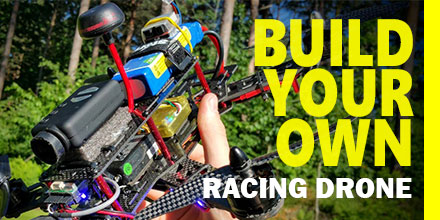
After revolutionizing the photography and film-making industries, it was inevitable that the racing industry would also feel the impact of drones.
The most popular form of competitive drone racing is First Person View (FPV). Such events are quickly gaining traction among UAV enthusiasts and the mainstream media.
With the backing of some wealthy benefactors, drone racing’s popularity is only set to rise.
If you would like to head off to the races, read on to learn how to build a racing drone in a few easy steps.
Racing Drones Explained
Most racing drones tend to be quadcopters built with speed and agility in mind. In the case of FPV racing, the drones also have a camera and video transmission system that allows the pilot to see a first-person view of the UAVs flight path through a set of goggles. Racing drones are an exciting way to gain flight experience and fine-tune your maneuvering skills.
For beginners, buying an assembled racing drone may be the best option. However, if you’re looking for a truly competitive edge then a self-built model is the way to go.
Most professional pilots prefer to build their own machines because it allows them to completely customize their vehicle. Drone technology is still relatively new but innovations happen quickly. A self-built drone allows you to create the fastest drone possible at any given time.
Preparing for your Racing Drone Build
To get started, you’ll need to gather all the requisite parts, tools, and equipment.
First step, consider the type of frame you would like to use. As mentioned above, a quadcopter frame is most favored by racers for its stability and versatility. A quadcopter has four arms, each fitted with a motor for flight. Popular frames include the Alien 5’’ FPV Frame, the Raceblade FPV Racing Quadcopter, and the MCQ One quad frame.
Frames, on average, cost around $100.
Once you choose your frame, you will also need to select: motors, propellers, antennas, a radio transmitter and a receiver, an on-board camera, batteries, and FPV goggles.
As a general rule, your motor should achieve a 2:1 thrust to weight ratio. However, you should try and achieve a much higher ratio than this. Figures of 8:1 or 10:1 ratios are not uncommon in the world of drone racing.
Other Equipment Considerations
- Cameras: Popular FPV cameras include brands such as FatShark, but a great starter package is the Eachine CMOS camera and transmitter kit at under $50.
- Transmitters: Leading transmitter brands include Boscam and Crazepony which get you up and running for under $30.
- Props: The best FPV props are those from Gemfan and market leader HQProp and will cost a mere $3 for two pairs.
- Batteries: Larger batteries mean longer flight times but the extra weight could slow down your drone so always choose the best power source you can find. Top brands include TATTU and GensAce.
- Goggles: If you are a new pilot, it is advisable to start off using your monitor as this allows you to quickly glance up to see the UAV during flight. Once you gain experience the best FPV goggles include the Aris Skyzone, FatShark Dominator, and models from HeadPlay.
It is also a good idea to purchase spare propellers and batteries as replacement parts in the event of crashes or loss of power.
As for tools, a basic kit should include a soldier iron, screwdrivers, and a multi-meter for testing connections. Set aside a building area with enough space for you to work on your racer.
Building a Racing Drone
Now comes the exciting part, putting your vehicle together! If this is your first build and you have little experience with soldering it’s a good idea to practice before you work on your vehicle. Resources like YouTube are a great place to learn and find tips to refine your soldering skills.
Remember, when building your racing drone, the two pairs of motors need to rotate in opposite directions in order for your UAV to fly. The muscle behind a speedy racer are the motors. Once attached, test the motors to confirm the rotational direction of each.
After attaching your motors to the arms and frame, it is time to add your drone’s brain -- the flight controller. A drone’s flight controller board relays messages from your controller to the machine. Add the flight controller by soldering the connectors to the board.
Once that's complete, it's time to add the battery by soldering it to the quad's base. Make sure to check for smoke or issues once the terminals are in place.
Average Cost to Build a Racing Drone
The cost of building a racing drone depends on a number of factors such as the quality of the parts, the ultimate use of the vehicle, and your budget.
It is possible to build a fairly good racing drone for under $300. A mid-range kit can cost up to $500. While professional drone kits can easily exceed a thousand dollars; with parts and spares pushing that figure even higher in many instances. Of course, the very best pilots can win significant cash prizes, recognition and sponsorship opportunities.
For those starting out in FPV racing there are tons of resources online that can help you pick up helpful tips and learn from the pros. Once your racer is completed, it is time to hone your skills as a pilot. The best racers dedicate hours of practice each week.
There are now several budding drone racing leagues and an increasing number of pilots entering the field. There is plenty of opportunity for anyone looking to take up racing drones as a hobby or as a professional pursuit. Finish up your build and get yourself to the races!
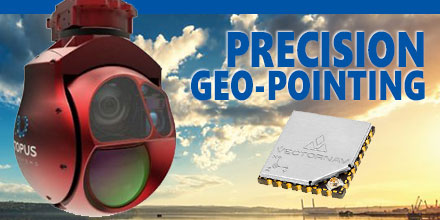 Octopus ISR Systems, a division of UAV Factory Ltd., announced the release of a new feature, "Precision Geo-Lock", for its miniature Epsilon series of gyro-stabilized gimbals.
Precision Geo-Lock combines a state-of-the-art GPS-aided inertial navigation system (GPS/INS) with dedicated software algorithms and payload operator software. It provides the user with highly accurate target geo-location, range-to-target, as well as Geo-Lock functionality and moving map user interface.
Octopus ISR Systems, a division of UAV Factory Ltd., announced the release of a new feature, "Precision Geo-Lock", for its miniature Epsilon series of gyro-stabilized gimbals.
Precision Geo-Lock combines a state-of-the-art GPS-aided inertial navigation system (GPS/INS) with dedicated software algorithms and payload operator software. It provides the user with highly accurate target geo-location, range-to-target, as well as Geo-Lock functionality and moving map user interface.

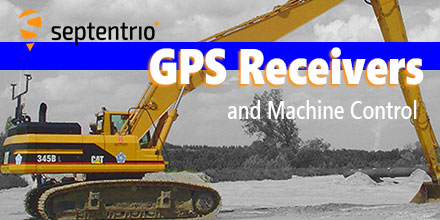 GPS receivers can assist operators in making better decisions by providing precise position information (indicate-only mode). Or the GPS receiver, as part of a guidance system, can take over the operation of the machine’s implement itself (fully-automatic mode) to follow a preloaded design.
In fully-automatic mode, the RTK centimeter-level precision of the GPS guidance system is far more accurate and consistent than relying on the operator’s skill alone.
Trenches are dug to exact depths, tractors are steered in perfect rows, piling rigs know the precise location for planting piles and surfaces are fine graded the first time. Work is completed quicker, more cheaply and to a higher specification when the need to carry out frequent measurements and surveys is not needed.
Compared to a Total Station, a GPS RTK system setup is quick and doesn’t require any of the elements to be in line of sight. A single reference base station can furnish all rover machines on-site continuously with RTK differential corrections. The status of the project and location of every machine on-site is updated in real-time giving site managers a full overview of progress.
GPS receivers can assist operators in making better decisions by providing precise position information (indicate-only mode). Or the GPS receiver, as part of a guidance system, can take over the operation of the machine’s implement itself (fully-automatic mode) to follow a preloaded design.
In fully-automatic mode, the RTK centimeter-level precision of the GPS guidance system is far more accurate and consistent than relying on the operator’s skill alone.
Trenches are dug to exact depths, tractors are steered in perfect rows, piling rigs know the precise location for planting piles and surfaces are fine graded the first time. Work is completed quicker, more cheaply and to a higher specification when the need to carry out frequent measurements and surveys is not needed.
Compared to a Total Station, a GPS RTK system setup is quick and doesn’t require any of the elements to be in line of sight. A single reference base station can furnish all rover machines on-site continuously with RTK differential corrections. The status of the project and location of every machine on-site is updated in real-time giving site managers a full overview of progress.
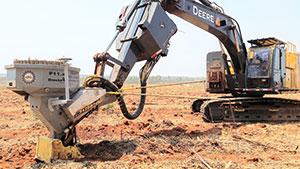
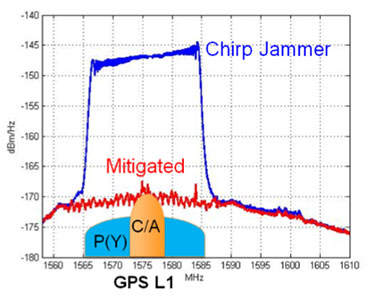
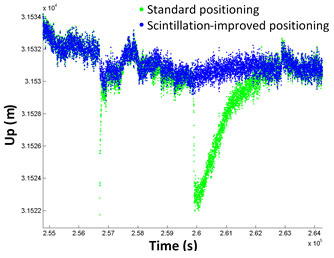
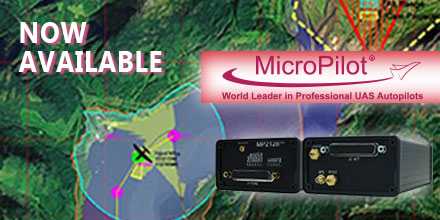 April 4, 2017 – Unmanned Systems Source is pleased to announce a new distribution partnership with MicroPilot, producers of full-featured UAV autopilots.
“MicroPilot is a world leader in small autopilot systems for UAS,” said Drew Osbrink, Business Development Director for Unmanned Systems Source.
"The MicroPilot product line is a great fit for customers looking for a reliable solution to manage complex autonomous behaviors for their UAS platforms,” said Osbrink.
Introduced in 2004 and weighing only 28 grams, MicroPilot's MP2x28g2 raised the bar around the world for functionality and value in small UAV autopilots. Paired with this full-feature UAV autopilot, the MicroPilot HORIZONmp ground control software provides a user-friendly, point-and-click interface for mission planning, parameter adjustment, flight monitoring, and mission simulation.
Building on the success of these proven innovations, MicroPilot now offers a series of autopilots, software, accessories, and customized UAV training and integration services.
April 4, 2017 – Unmanned Systems Source is pleased to announce a new distribution partnership with MicroPilot, producers of full-featured UAV autopilots.
“MicroPilot is a world leader in small autopilot systems for UAS,” said Drew Osbrink, Business Development Director for Unmanned Systems Source.
"The MicroPilot product line is a great fit for customers looking for a reliable solution to manage complex autonomous behaviors for their UAS platforms,” said Osbrink.
Introduced in 2004 and weighing only 28 grams, MicroPilot's MP2x28g2 raised the bar around the world for functionality and value in small UAV autopilots. Paired with this full-feature UAV autopilot, the MicroPilot HORIZONmp ground control software provides a user-friendly, point-and-click interface for mission planning, parameter adjustment, flight monitoring, and mission simulation.
Building on the success of these proven innovations, MicroPilot now offers a series of autopilots, software, accessories, and customized UAV training and integration services.
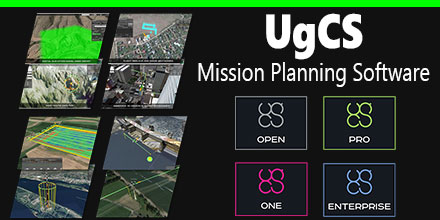 March 23, 2017 – Unmanned Systems Source is pleased to announce a new distribution agreement with SPH Engineering.
SPH Engineering is the creator of the popular UgCS Mission Planning Software which provides central management of all types and manufacturers of UAVs. It supports both fixed wing and multi-rotor platforms.
Supported platforms, include: DJI Phantom 4 / 4 Pro, Phantom 3 and Phantom 2, Inspire 2, Inspire 1 / 1 Pro / Raw, Mavic Pro, A3, N3, Matrice 600 / 600 Pro, Matrice 100, A2, Naza-M v2, WooKong-M, Vision2+, Ace One.
Currently, supported autopilots, include: Ardupilot, Px4 and other MAVLink compatible; InnoFlight: Jupiter JM-1; Mikrokopter; Micropilot; Microdrones; LockheedMartin: Kestrel, Indago.
"UgCS software is a great addition to our site," said Andrew Osbrink, Business Development Director at Unmanned. "Whether a customer operates a fixed wing or multi-rotor, many crafts or just one, UgCS' flexible licensing model means organizations can purchase the license that works for their situation."
March 23, 2017 – Unmanned Systems Source is pleased to announce a new distribution agreement with SPH Engineering.
SPH Engineering is the creator of the popular UgCS Mission Planning Software which provides central management of all types and manufacturers of UAVs. It supports both fixed wing and multi-rotor platforms.
Supported platforms, include: DJI Phantom 4 / 4 Pro, Phantom 3 and Phantom 2, Inspire 2, Inspire 1 / 1 Pro / Raw, Mavic Pro, A3, N3, Matrice 600 / 600 Pro, Matrice 100, A2, Naza-M v2, WooKong-M, Vision2+, Ace One.
Currently, supported autopilots, include: Ardupilot, Px4 and other MAVLink compatible; InnoFlight: Jupiter JM-1; Mikrokopter; Micropilot; Microdrones; LockheedMartin: Kestrel, Indago.
"UgCS software is a great addition to our site," said Andrew Osbrink, Business Development Director at Unmanned. "Whether a customer operates a fixed wing or multi-rotor, many crafts or just one, UgCS' flexible licensing model means organizations can purchase the license that works for their situation."
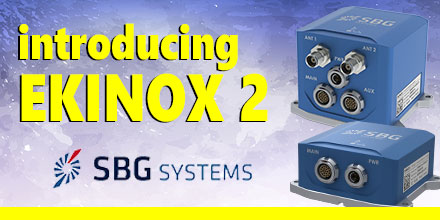 March 20, 2017 - SBG Systems will unveil the new Ekinox 2 Series this week during the U.S. Hydro Show, in Galveston, TX.
The Ekinox 2 Series is a new generation of SBG's advanced line of tactical grade MEMS-based inertial navigation systems. It features new accelerometers and gyroscopes, enhancing Ekinox 2 attitude accuracy by a factor of two.
In addition, Ekinox 2 is available as a drop-in replacement of the previous Ekinox, at the same price level. There is no need for any additional electrical or software integration. Find out more by reading the SBG product change notification.
March 20, 2017 - SBG Systems will unveil the new Ekinox 2 Series this week during the U.S. Hydro Show, in Galveston, TX.
The Ekinox 2 Series is a new generation of SBG's advanced line of tactical grade MEMS-based inertial navigation systems. It features new accelerometers and gyroscopes, enhancing Ekinox 2 attitude accuracy by a factor of two.
In addition, Ekinox 2 is available as a drop-in replacement of the previous Ekinox, at the same price level. There is no need for any additional electrical or software integration. Find out more by reading the SBG product change notification.
 After revolutionizing the photography and film-making industries, it was inevitable that the racing industry would also feel the impact of drones.
The most popular form of competitive drone racing is First Person View (FPV). Such events are quickly gaining traction among UAV enthusiasts and the mainstream media.
With the backing of some wealthy benefactors, drone racing’s popularity is only set to rise.
If you would like to head off to the races, read on to learn how to build a racing drone in a few easy steps.
After revolutionizing the photography and film-making industries, it was inevitable that the racing industry would also feel the impact of drones.
The most popular form of competitive drone racing is First Person View (FPV). Such events are quickly gaining traction among UAV enthusiasts and the mainstream media.
With the backing of some wealthy benefactors, drone racing’s popularity is only set to rise.
If you would like to head off to the races, read on to learn how to build a racing drone in a few easy steps.
